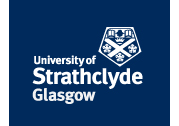New Europe Barometer (NEB) Surveys
A Bottom up Method of Evaluating Countries in Transformation
The fall of the Berlin Wall created great uncertainties and opportunities across half of Europe. The Centre for the Study of Public Policy and the Paul Lazarsfeld Society, Vienna, cooperated in launching a major multi-national survey, the New Democracies Barometer (NDB), to monitor the response of people caught up in the transformation of their polity, economy, society and often state boundaries too. Five NDB surveys were conducted between 1991 and 1998. Changes in Europe have been matched by changes in the New Europe Barometer survey. After the fifth round, the CSPP took responsibility for conducting surveys of post-Communist countries seeking membership in the European Union. It has conducted NEB rounds in 2001 and the winter of 2004/5.
- NDB VII Winter 2004-5 SPP 404
- NDB VI Autumn, 2001 SPP 364
- NDB V Spring, 1998 SPP 306
- NDB IV Autumn, 1995 SPP 262
- NDB III Winter, 1993/94 SPP 230
- NDB II Autumn, 1992 SPP 212
- NDB I Autumn, 1991 SPP 204
- Trends in NDB Surveys SPP 308
For a full list of NDB studies, click here.
QUESTIONNAIRES
COUNTRIES covered in one or more surveys NDB/NEB
surveys include: the eight new member states of the EU-- Czech
Republic, Slovakia, Hungary,
Poland, Slovenia,
Estonia, Latvia, Lithuania,
--plus two applicant countries, Bulgaria and Romania;
and in the Balkans, Croatia, Serbia,
and Bosnia. In the former Soviet Union it covers
Belarus and Ukraine,
and there has been one survey in Moldova. In addition,
many questions asked in NEB surveys have been asked in New
Russia Barometer surveys.
TOPICS. The NEB works on the Heineken's principle of reaching parts that official statistics do not reach. Because it is independent of government, it can ask people to evaluate their national institutions, for example, how fair government is and how trustworthy or untrustworthy are its political institutions. Evaluations are made of the current political and economic system by comparison with the past--and future expectations of democratic or undemocratic governance. Health is also a special concern.
COMPARISONS ACROSS TIME AND SPACE: Because the NEB repeats key questions across time within a country and across countries, this creates a unique comparative data base. Trends within a country since 1991 show the extent of improvement or fluctuations in the costs and benefits of political and economic transformation. Comparisons can be made across new EU member states and Soviet successor states--and with countries that fall between these two categories.
PUBLICATIONS: NEB surveys are published promptly as Studies in Public Policy, which give full results for every country and question. Analyses are also published in SPP papers and in peer-reviewed social science journals on both sides of the Atlantic; in public affairs periodicals such as the Journal of Democracy.
Latest Studies in Public Policy
GOING PUBLIC WITH PRIVATE OPINIONS: ARE POST-COMMUNIST CITIZENS AFRAID TO SAY WHAT THEY THINK? SPP 408
SOUTH-EAST EUROPE BAROMETER: PUBLIC OPINION COMPARED IN 7 COUNTRIES. SPP 407. Includes Albania and Macedonia as well as Bosnia-Hercegovina, Croatia, Serbia & Montenegro, Bulgaria and Romania.
CROATIAN OPINION AND EU MEMBERSHIP. SPP 406
THE MOLDOVAN COMMUNISTS: FROM LENINISM TO DEMOCRACY. SPP 405
INSIDERS AND OUTSIDERS: NEW EUROPE BAROMETER VII SPP 404. Full details of responses to a common set of questions asked in surveys from October 2004 - February 2005 in 13 countries.
DIVISIONS WITHIN UKRAINE: A PUBLIC OPINION SURVEY. SPP 403. Results of a February, 2005 post-elections survey separately by ethnic group.
NEW RUSSIA BAROMETER XIV: EVIDENCE OF DISSATISFACTION. SPP 402
NEW BALTIC BAROMETER VI: A POST-ENLARGEMENT SURVEY. SPP 401 Detailed comparison of Estonians, Latvians, Lithuanians and Russians in each of the Baltic states.
ARE BULGARIA AND ROMANIA UP TO EU STANDARDS? SPP 400


